What's New
Displaying results 2801 - 2810 of 4914

Resource | Publications,
The National Strategic Plan (NSP) is the primary guiding document supporting our efforts to improve health and is an invaluable resource to keep us focused and on track over the next five years.
The National Strategic Plan 2016-2020 has been developed to align with the Government's priorities for the health sector, the global post 2015 development agenda, and the United Nations Sustainable Development Goals, which builds upon the Millennium Development Goals that preceded them. The "Healthy Islands" (HI) vision of the Pacific has also been considered as one of the key frameworks in developing this document. Based on the HI vision MoHMS has initiated the "Wellness Fiji" approach that forms the basis for reorientation of Fiji's Primary Health Care (PHC) delivery towards reaching people in the various "settings" in which they live, work and play and through expanded partnerships between peripheral health workers and local communities. Many of the themes that are highlighted in these development frameworks are cross-cutting and thus are integrated throughout the NSP.
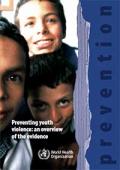
Resource | Publications,
Each year an estimated 200 000 youth aged 10–29 years are murdered, making homicide the fourth leading cause of death in young people globally. In addition to these deaths, millions of young people sustain violence-related injuries that require emergency medical treatment, and countless others go on to develop mental health problems and adopt high-risk behaviours such as smoking, alcohol and drug abuse, and unsafe sex as a result of their exposure to youth violence. The emotional toll of youth violence on its victims, their loved ones and friends is high, and youth violence shatters lives. These consequences also have high economic costs, both for society and for the families of those affected.
The aim of this manual is to help policy-makers and planners everywhere – particularly in settings with limited human and financial resources – to address youth violence using an evidence-informed approach. The manual provides a science-based framework for understanding why some individuals are more likely to become involved in youth violence than others and why youth violence is more concentrated in particular communities and sectors of the population than in others. This framework incorporates a life-course approach that recognizes how behaviour in the present is shaped by earlier developmental stages. It also takes into account how youth violence is influenced by characteristics of the individual; family and peer relationships; and features of the community and society, such as economic inequality and high levels of alcohol consumption.

Resource | Tools,
There is widespread agreement that in order to make progress on child maltreatment it is important for policy-makers to have information on its scope and characteristics, often referred to by the public health term “epidemiology”. Researchers around the world have typically responded to this need using community surveys to count the prevalence of child maltreatment in the general population. Hundreds of such studies have been done in dozens of countries and other jurisdictions.
The goal of this toolkit is to provide researchers with more information on methodological strategies and considerations when conducting agency studies on child maltreatment to increase the use and success of this kind of research in countries and jurisdictions around the globe. Such research may then lead to more structured agency data collection systems to inform practice in the area of child maltreatment.
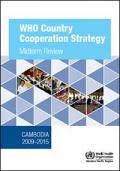
Resource | Publications,
This document presents a midterm review of the WHO Country Cooperation Strategy (CCS) 2009–2015 for Cambodia. Since the CCS was drafted, the development context in Cambodia has changed markedly – and the country now faces new challenges associated with economic and social transition.
The WHO Country Cooperation Strategy (CCS) for Cambodia was drafted in 2008 to cover 2009–2015. Since then, Cambodia and its health sector have developed rapidly. The economy is growing steadily, with the country due to attain middle-income status in the next few years; poverty is falling; and urbanization is well under way. The health sector is also maturing and now faces a new set of challenges associated with economic and social transition: changing disease patterns and in particular the emergence of noncommunicable diseases (NCDs); a growing private sector active in the health market; and the challenge of ensuring quality as coverage expands.

Resource | Reviews and Snapshots,
In Malaysia, the key national planning process leads to the development of five-year national development plans, with the current 10th Malaysia Plan (10th MP) covering 2011–2015 and the 11th MP set to span 2016–2020.
As a result, the recent WHO–Malaysia Country Cooperation Strategy 2009–2013 was not aligned with the time frame of Malaysia’s primary development planning cycle. This is problematic as the country’s five-year planning cycle includes extensive consultations and processes that identify key national and sectoral priorities for the coming period. If the next CCS had been developed to cover 2014–2018, it would have continued to be out of step with this important national planning process.
This review, therefore, was undertaken with a view to considering the suitability of extending the framework described in the 2009–2013 CCS to also cover 2014–2015. This would then enable the next full CCS to cover 2016–2020, which would synchronize with the 11th MP.
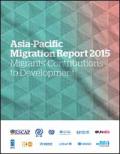
Resource | Publications,
The people of Asia and the Pacific are on the move. Migrants from countries across the region play a key role as development actors, helping drive GDP growth in their countries of destination, while supporting families and even communities in their countries of origin. The benefits of migration, however, remain under-acknowledged. Too often, prejudice against migration and unilateral approaches guide responses to migration challenges, rather than evidence-based and cooperative ones.
The Asia-Pacific Migration Report 2015: Migrants' Contributions to Development, produced by the Asia-Pacific Regional Thematic Working Group on International Migration, including Human Trafficking, provides an insight into how labour migration, the dominant migration trend in the Asia-Pacific region, can contribute to development in countries of origin and destination in the Asia-Pacific region.
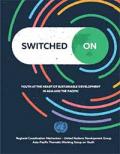
Resource | Publications,
Investing in youth is an investment in our future. It is also fundamental for the successful implementation of the global 2030 Agenda for Sustainable Development and the Sustainable Development Goals (SDGs). This is especially true in the Asia-Pacific region, which is home to about 700 million youth, whose ambitions and abilities can make a substantial contribution to the realization of the prosperous, peaceful and sustainable future we want for all people in our region.
This report was produced for three main reasons: First and foremost to raise awareness of the importance of youth-related, evidence-based and strategic participatory policy-making, planning and programming. Second, to highlight the current status, challenges and opportunities for the youth of Asia and the Pacific. Third, to support the understanding and practical responses — by governments, civil society, the private sector, academia and other stakeholders — of the position and promise of youth in the region.
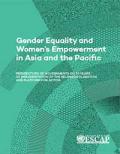
Resource | Publications,
Gender equality and women’s empowerment are fundamental human rights issues and cornerstones of sustainable and equitable development. For the last 20 years, the Beijing Declaration and Platform for Action have guided the realization of these essential elements of the future we want.
In recognition of the significance of gender equality, especially for the new global development agenda, the United Nations Economic and Social Commission for Asia and the Pacific (ESCAP), in cooperation with the United Nations Entity for Gender Equality and the Empowerment of Women (UN Women), conducted a study of the perspectives of Governments in the Asia-Pacific region with respect to progress in implementation of the Beijing Declaration and Platform for Action.
This report is the result of the analytical review, outlining the perspectives of ESCAP members and associate members with respect to progress towards, and fundamental requirements for, the realization of gender equality and women’s empowerment in Asia and the Pacific.
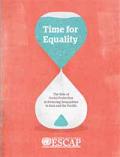
Resource | Publications,
The report provides evidence that social protection is an effective instrument to reduce inequalities, and by so doing, contributes to the integration of the economic, social and environmental dimensions of sustainable development.
It examines in particular the inequalities faced by children, persons of working-age, older persons and in relation to access to affordable health care and related social protection initiatives taken in the region. It notes that while countries in the region are increasingly recognizing the importance of social protection, important coverage gaps remain. It also includes examples of successful schemes and provides member States and other stakeholders with recommendations along eight broad and complementary approaches.

Resource | Publications,
India has one of the world’s largest and most robust HIV sentinel surveillance (HSS) systems. Since 1998 it has helped the national government to monitor the trends, levels, and burden of HIV among different population groups and develop effective control measures. The HSS is implemented across the country with support from two national institutes and six regional public health institutes.
The 13th round of HSS was implemented during 2012-13 at 750 antenatal clinics (ANC) surveillance sites, covering 556 districts across 34 states and union territories (UTs) in the country. The methodology adopted during the HSS was consecutive sampling with unlinked anonymous testing. Specimens were tested for HIV following the two-test protocol. However, nine sites could not achieve the minimum required sample size and were excluded. A total of 2,94,732 ANC samples collected and tested from the 741 valid sites have been considered for the analysis in this report.





